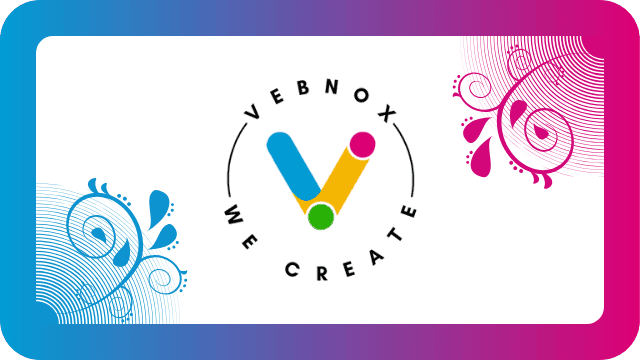Comprehensive End-to-End Web Development Solutions for Businesses
Table of Contents
Introduction to End-to-End Web Development
End-to-end web development refers to a comprehensive approach that encompasses the entire process of creating a web application, from conception to deployment and beyond. For businesses seeking to establish a robust online presence, understanding the intricacies of web development is crucial. This holistic methodology integrates both front-end and back-end development, ensuring that every aspect of the project aligns with the business objectives and user expectations.
The front-end development involves crafting a visually appealing interface through responsive web design tailored for diverse devices. Professional web developers utilize the latest technologies to create user-friendly websites that enhance customer engagement. On the other hand, back-end development focuses on server-side logic and database management, enabling websites to function smoothly and securely. This dual focus ensures that both the aesthetic and functional requirements of website design are met, ultimately enhancing the overall user experience.
Moreover, end-to-end web development solutions extend beyond initial creation and design. They encompass website management, ongoing maintenance, and potential redesign efforts to keep the site relevant and efficient as business needs evolve. Businesses must also prioritize SEO web development techniques to optimize their websites for search engines, improving visibility and attracting more traffic. Custom web development allows for tailoring solutions specifically to meet industry demands and customer preferences, which can be critical in a competitive market.
In sum, adopting an end-to-end web development approach allows businesses to streamline processes, reduce redundancies, and ensure that the final digital product is cohesive and functional. By considering every element of web application development, from the initial stages of business website creation to long-term website optimization, companies can secure a strong foothold in the digital landscape. As digital transformation continues to evolve, a comprehensive web development strategy is more important than ever for achieving online success.
Understanding Front-End Development
Front-end development is a critical component of web development, focusing on the client-side aspects of a website or web application. It involves the use of technologies such as HTML (HyperText Markup Language), CSS (Cascading Style Sheets), and JavaScript. Together, these languages form the foundational building blocks of user-friendly websites, providing the means to create visually appealing and interactive interfaces that enhance the user experience.
HTML serves as the backbone of web pages, structuring the content and defining elements like headings, paragraphs, and links. CSS is employed to control the presentation layer, allowing developers to manipulate layouts, colors, and fonts, thereby ensuring that the websites are visually engaging. JavaScript introduces interactivity, enabling functionalities such as dynamic content updates, user input processing, and animations, which are essential for modern web application development.
In addition to these core technologies, front-end development leverages frameworks and libraries such as React, Angular, and Vue.js. These tools streamline the development process, aid in managing application state, and enhance the efficiency of creating complex user interfaces. Responsiveness is a fundamental principle of front-end development, achieved through responsive web design techniques that ensure optimal viewing experiences across various devices and screen sizes. This aspect is crucial, as an increasing number of users access business websites through mobile devices.
Moreover, adherence to user interface (UI) principles is vital in front-end development. These principles focus on the design and layout of the interface to create intuitive experiences that guide users effortlessly through a website. Evaluating user interactions and behaviors can lead to significant improvements in website optimization, ultimately contributing to the success of business website creation and maintaining an effective online presence.
In summary, the integral role of front-end development in web development cannot be understated. By utilizing the appropriate technologies and adhering to best practices, businesses can achieve impressive outcomes in their digital transformation initiatives, directly impacting user engagement and overall success.
Exploring Back-End Development
Back-end development constitutes the server-side of web applications, playing a pivotal role in the overall functionality of business websites. This aspect of web development is essential for managing data and executing business logic that occurs behind the scenes. Without an efficient back-end, user-facing elements would become stagnant, now making back-end development crucial in business website creation and operational success.
Multiple programming languages are employed in back-end development, with Python, Ruby, and Node.js being the most prominent. Python is highly valued for its simplicity and efficacy, making it a preferred choice for many professional web developers. Ruby, especially with its Rails framework, excels in rapid application development and fosters a culture of simplicity. Node.js, built on JavaScript, allows developers to leverage their skills across both the front end and back end, promoting a streamlined web application development process.
After establishing the programming environment, the choice of database technology is paramount. Businesses often find themselves choosing between SQL and NoSQL databases based on their specific needs. SQL databases provide structured data storage with defined schemas, which are beneficial for complex queries, such as transactional systems. Conversely, NoSQL databases offer flexibility by allowing for unstructured data storage, accommodating the dynamic nature of modern web applications. This adaptability is vital for organizations undergoing digital transformation.
Furthermore, proper server architecture and APIs are crucial elements in back-end development. APIs, or application programming interfaces, serve as conduits that facilitate communication between the server and client-side applications. Effective API management leads to enhanced website optimization and ensures that data flows seamlessly, contributing to the creation of user-friendly websites. Overall, robust back-end development forms the backbone of any successful web development solution, ensuring a solid foundation for business online presence.
Integration of Front-End and Back-End
In the realm of web development, the integration of front-end and back-end components is crucial for creating functional and efficient applications. The front-end, often referred to as the client side, is what users interact with directly. It is responsible for the layout, design, and overall user experience of the website. On the other hand, the back-end, or server side, entails the underlying processes that facilitate data storage, retrieval, and application logic that users do not see. The synergy between these two components is essential for developing responsive web design that enhances user interaction and satisfaction.
Technologies such as RESTful APIs and GraphQL play a fundamental role in this integration process. RESTful APIs operate as a bridge allowing seamless communication between the front-end and back-end, facilitating data exchange over HTTP. They enable front-end applications to request and post data effortlessly, ensuring that users have access to the most up-to-date information. GraphQL, another innovative integration technology, enhances this process by providing a single endpoint through which front-end developers can query specific data they require, optimizing data retrieval and minimizing payload size.
Employing these methodologies allows professional web developers to create user-friendly websites that operate efficiently regardless of the device being used. Particularly in today’s digital landscape, businesses increasingly rely on effective web application development to maintain their online presence. The integration of front-end and back-end technologies is not only about functional performance but also about enhancing website optimization and management. Businesses seeking to develop robust business websites are typically advised to engage a reputable web development agency capable of delivering custom web development solutions that seamlessly integrate these components. Ultimately, achieving this integration fosters a superior user experience, driving engagement and conversion metrics for business websites development.
User Experience (UX) and User Interface (UI) Design
In the realm of web development, the importance of User Experience (UX) and User Interface (UI) design cannot be overstated. A well-crafted UX and UI can significantly enhance a user’s interaction with business websites and mobile applications. User-centric design approaches aim to create user-friendly websites that cater to the needs and preferences of the target audience, ultimately leading to increased engagement and satisfaction.
Best practices in UX design involve understanding user behaviors and preferences through comprehensive research. This includes employing tools such as wireframes and mockups during the website design services process. These aids provide a visual representation of the site structure, allowing stakeholders to visualize the intended experience. Furthermore, incorporating responsive web design principles ensures that websites adapt seamlessly across various devices, thus maintaining an optimal user experience.
Usability testing plays a pivotal role in identifying potential issues in design and functionality. By observing users as they navigate through the web application development process, professional web developers can gather valuable feedback. This iterative design process not only enhances usability but also helps refine SEO web development strategies, ensuring the site remains competitive in the digital landscape.
User feedback serves as a critical metric in the website management process, providing insights into real-world application usability. Engaging with users to understand their experiences can lead to actionable improvements and a more refined business online presence. By continually iterating on designs based on user interactions, businesses can achieve websites that are not only visually appealing but also highly functional and efficient.
The ultimate goal of integrating effective UX and UI design principles into web development is to foster a positive digital experience, which subsequently enhances customer loyalty and drives conversions. As businesses strive to stay ahead in the digital transformation era, embracing comprehensive UX and UI strategies remains essential in delivering successful web development solutions.
Quality Assurance and Testing in Web Development
Quality assurance (QA) is an essential component of the web development process, ensuring that all aspects of a web project meet the highest standards of quality and functionality. Various types of testing play a crucial role in achieving these standards. Among them, unit testing focuses on verifying individual components of the web application to confirm that each part functions correctly in isolation. This approach allows professional web developers to catch errors early in the development cycle, facilitating easier troubleshooting and maintenance later on.
Integration testing, another vital aspect of quality assurance, assesses the interaction between different modules of the web application. This step is particularly important in custom web development, where multiple components may be integrated. By identifying issues that arise when components work together, such testing ensures a seamless user experience and the overall reliability of the website design services offered.
User acceptance testing (UAT) takes this a step further by validating the complete web application in a real-world environment. This phase involves the end-users testing the functionality, design, and performance of the business websites to confirm that they meet their requirements. UAT is critical for website optimization and ensures that the final product aligns with user expectations.
Both automated and manual testing strategies are employed in the QA process. Automated testing leverages tools that execute tests automatically, increasing testing efficiency and coverage—crucial for large-scale web application development. Conversely, manual testing allows for subjective evaluation, making it indispensable for assessing user experience nuances. Adopting best practices in QA, such as consistent documentation, iterative test cycles, and early engagement of all stakeholders, ensures that the final website is not only functional but also user-friendly and SEO-friendly.
Maintenance and Support for Web Applications
Once a web application is launched, the journey does not end; rather, it marks the beginning of ongoing maintenance and support, essential for ensuring longevity and optimal performance. Routine maintenance tasks are crucial for the effective functioning of web applications. These tasks can include regular updates to the website design and functionality, ensuring that it aligns with the latest industry standards and user expectations. Moreover, consistent monitoring can help identify any performance issues that may impede user experience on business websites.
Equally important is the implementation of crucial security patches. Cybersecurity threats are ever-evolving, and businesses must prioritize safeguarding their web applications against potential vulnerabilities. Regular updates not only fend off malware but also help in maintaining an SEO-friendly website that adheres to best practices. Professional web developers help organizations stay ahead of the curve by providing website optimization services that facilitate rapid responses to emerging threats and technological advancements.
Ongoing support also extends to user engagement. Engaging users through regular content updates, feature enhancements, and interactive elements keeps the audience interested and encourages return visits. Businesses often seek a web development agency that can offer comprehensive website management solutions. These solutions include tracking user engagement metrics, providing analytical insights, and recommending redesigns or enhancements that foster a user-friendly experience.
To ensure that a web application continues to fulfill business objectives, organizations should establish a structured maintenance plan. This plan may encompass periodic reviews of the web application’s performance, necessary updates, and user feedback solicitations. By investing in proper maintenance and support for web applications, businesses can create a robust online presence, ensuring their digital transformation efforts translate to enhanced functionality, increased traffic, and greater user satisfaction over time.
Choosing the Right Web Development Partner
When embarking on a journey to enhance your business’s online presence through web development, selecting the right partner is crucial. A professional web development agency can significantly impact the success of your projects, whether it’s custom web development, responsive web design, or ecommerce web development. To ensure that your needs are met, it is essential to evaluate various key factors before making a decision.
First and foremost, assess the experience of the web development agency. Look for companies that have a proven track record in delivering comprehensive web development solutions tailored for business websites. Their portfolio should reflect a variety of successful projects that demonstrate their ability to create user-friendly websites. A diverse range of completed projects can provide insight into the agency’s capability to handle different challenges and industries effectively.
Next, consider client testimonials and case studies, which can serve as valuable indicators of the agency’s reliability and quality of service. Positive experiences shared by previous clients reveal a company’s commitment to customer satisfaction and project success. This feedback is essential when evaluating an agency’s ability to provide website design services that align with your vision.
Technical expertise is another critical consideration. Ensure that the agency consists of experienced professional web developers who are well-versed in the latest technologies and trends, such as full-stack web development and website optimization. Their understanding of SEO web development is also critical to ensure that the websites they create are not only visually appealing but also search engine friendly.
Lastly, establishing clear communication and aligned goals is vital for a successful partnership. Foster a collaborative environment to ensure that both parties are on the same page, sharing insights, feedback, and updates throughout the project. By choosing a web development partner that prioritizes synergy and transparency, you can pave the way for successful business website creation that meets your specific needs.
Future Trends in Web Development
As we progress into an increasingly digital age, businesses must stay abreast of emerging trends in web development to maintain a competitive edge. One of the most significant trends shaping the future is the rise of artificial intelligence (AI) in web design. AI is revolutionizing the way professional web developers create and optimize user-friendly websites. Through machine learning algorithms, AI can analyze user behavior and preferences, enabling businesses to offer highly personalized experiences on their websites. This adaptation creates a more engaging environment that enhances user satisfaction, ultimately leading to improved conversions.
Another crucial aspect to consider is the growing importance of security and privacy in web development. With data breaches and cyber threats becoming increasingly prevalent, businesses must prioritize security measures in the development of their business websites. Implementing robust encryption techniques and security protocols is vital in safeguarding sensitive customer data. Furthermore, businesses should ensure their websites are compliant with regulatory standards, enhancing customer trust in their online presence.
The shift toward progressive web apps (PWAs) is also a noteworthy trend. PWAs combine the best aspects of web and mobile applications, providing users with a seamless and engaging experience across various devices. They can function offline, load quickly, and are highly responsive, making them an attractive solution for businesses investigating web application development options. The adoption of PWAs can significantly enhance the user experience, leading to higher engagement rates and retention.
Finally, as the focus on website optimization continues to grow, businesses must recognize the importance of SEO web development practices. By creating SEO-friendly websites, they can improve their visibility in search engine rankings and attract more potential customers. Embracing these emerging trends in web development is essential for businesses looking to thrive in an era marked by digital transformation and rapid technological advancements.







Comments are closed